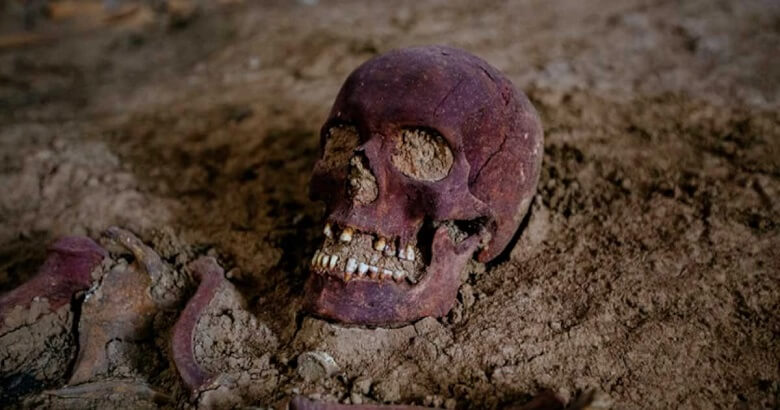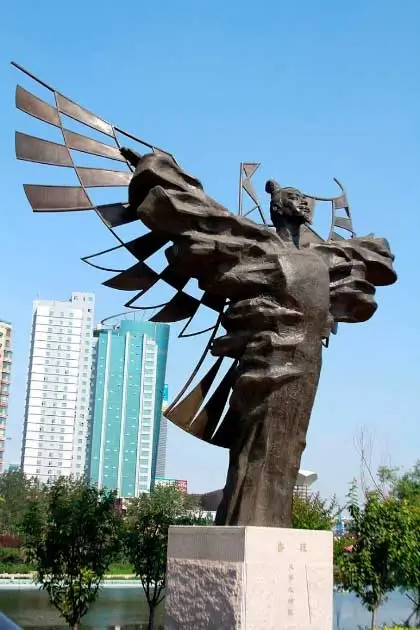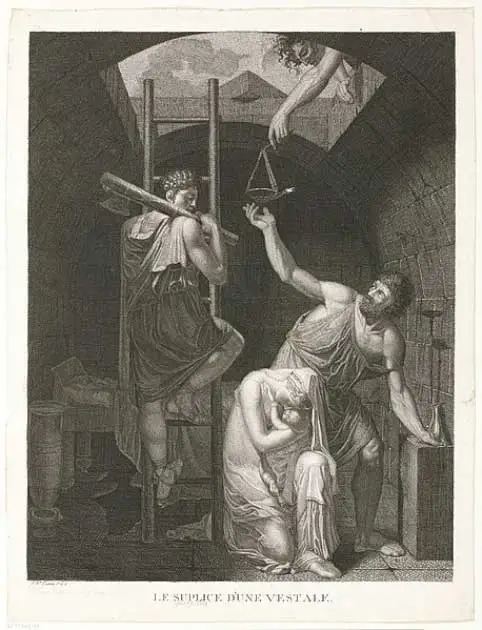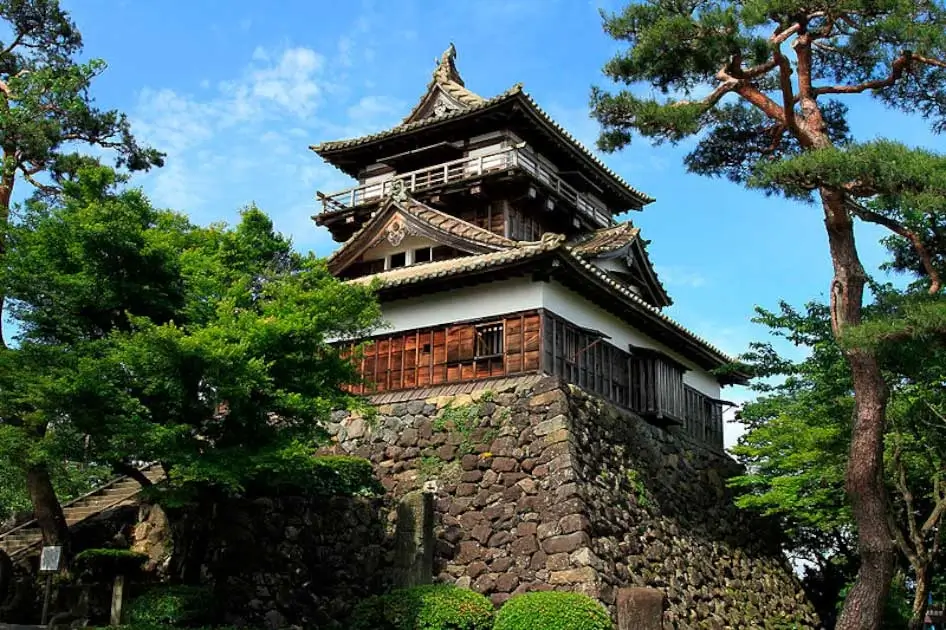
Blood & Mortar: The Killer Architecture of Hitobashira
In ancient Japan, these construction human sacrifices were called Hitobashira. What is a construction human sacrifice, and what was its purpose?
By: Lauren Dillon | Historic Mysteries
When we think of human sacrifices, we picture things like Aztec priests offering a man’s still-beating heart to the gods. Maybe it conjures up images of the biblical Abraham placing his son Isaac on an altar to burn under God’s command.
Then there is the polar opposite of Abraham and Isaac, stories of satanic human sacrifices and blood rituals. In all three cases, a human is sacrificed as an offering to a deity of some sort. But perhaps the strangest human sacrifice is that of “construction” human sacrifice.
In ancient Japan, these construction human sacrifices were called Hitobashira. What is a construction human sacrifice, and what was its purpose?
Hitobashira
Hitobashira means “human pillar” in Japanese, and it was the practice of a form of human sacrifice. A person would be buried alive under or close to large structures like dams, castles, and bridges as a prayer to the Shinto gods.
The belief was that the sacrificed person’s spirit would protect the architectural structure from destruction by floods, natural disasters, and/or enemy attacks. Hitobashira is just one of the many names for immurement or live entombment. Immurement can be found in folklore worldwide, but in the case of Hitobashira the sacrifice was specific to the location where the body was entombed.
But it happened elsewhere, too. This practice of burying someone alive as a sacrifice to ensure the durability of a large structure is known by other names in other East and Southeast Asian countries.

In China, the practice is known as daa saang zong/da sheng zhuang. According to Chinese legends, da sheng zhuang was proposed by the master carpenter, builder and inventor from the Zhou dynasty (1050 – 771 BC), Lu Ban.
It was a common belief that moving the soil or earth during the construction of large structures destroyed the land’s Feng-Shui, which would anger the ghosts of individuals whose death was unjust. The angry spirits would cause accidents or tear down the construction of whatever was being built on the site.
At its core, da sheng zhuang was seen as a way to appease angry or evil spirits to prevent or reduce the number of incidents of destruction or injury during the construction of the large structure.
Immurement in Myanmar is known as myosade, and in Indonesia, the phrase used is tumbal proyek. There has been archaeological evidence that these practices did really occur at some point in the past.
The gender, ages, and number of people needed to complete this process vary in each country and are now seen as inhumane and aren’t practiced. However, now and then, there is an incident of Hitobashira or immurement in isolated or rural communities as a standard folkloric practice.
More Common Than You Think
While Hitobashira and other forms of human sacrifice sound relatively uncommon, you will be surprised to learn that live entombment or human sacrifice occurred outside of ancient Asia and South America.
Immuration can be found in folklore and legends in Finland, Estonia, Sweden, Latvia, Albania, Romania, ancient Egypt, and the Czech Republic. These legends all feature live entombment as a form of punishment.

When a Vestal Virgin in ancient Rome broke her vow of chastity, she was said to be buried alive. At the English ruins of Thornton Abbey in Lincolnshire, an immured skeleton was discovered behind a wall.
The Hungarian countess Elizabeth Báthory, ominously known as The Blood Countess, was locked in a sealed room where she died as her punishment for killing several girls. The Serbian epic poem, The Building of Skadar, tells the story of a mother being buried alive in the walls of a fortress to prevent a wood nymph from destroying the fortress every night. There is also the well-known poem The Cask of Amontillado by American writer and poet Edgar Allan Poe, where a man is buried alive in the Parisian catacombs.
Legends of Hitobashira
The earliest written records and descriptions of Hitobashira are found in the Nihon Shoki (The Chronicles of Japan). The story in the Nihon Shoki about Hitobashira features the 16th Emperor of Japan, Emperor Nintoku, from 323 AD.
In this story, the Kitakawa and Mamuta Rivers overflowed, and the people couldn’t stop the flooding. The Emperor had a “divine revelation” in a dream that told him he needed to go get a person known as Kowakubi from the Musashi province and another person known as Koromono-ko from the Kawachi province. In the Emperor’s dream, these two people would be sacrificed to the Kitakawa and Mamuta Rivers deities to stop the flooding.
The two people, Kowakubi and Koromono-ko, were caught and brought to the rivers. Kowakubi was first and was thrown into the Kitakawa River while others on the banks of the river prayed and offered the man the river’s deity.
Koromono-ko was a different story; he brought two gourds with him, which he threw into the river and said: “I came here to sacrifice my life to thee, because thou art inflicting the calamity upon the people of this district. If thou dost sincerely want my life, sink these gourds so that they may not float again; then I shall know thee as the true deity of this river and offer my body to thee. But if thou canst sink them, thou art not the true deity, and it would be in vain for me to throw my life away.”

In classic folklore tradition, the gourds did not sink, and they floated down the river. The bank was made strong thanks to Kowakubi, and Koromono-ko saved his own life.
Japanese historian and art expert Noritake Tsuda wrote these stories are regarded as myths and folkloric traditions. Plus, the Nihon Shoki was written four centuries after this instance of Hitobashira, making the provenance of the story suspect.
Another legend of Hitobashira comes from the Aihara people in the Buzen province. Again, a river was causing the Yamakuni River to flood each year. There were seven commissioners; one was named Yuya-danjo Motonobu, who governed a local shrine at a parish.
The men offered prayers to the shrine for a week, day and night, but the river still flooded. Since that plan didn’t work, they decided it was necessary to perform a human sacrifice, but nobody in the village wanted to volunteer to be sacrificed.
Yuya-danjo proposed that he and his six other parish governors take off their pants and throw them into the river. Whoever’s pants sank would be the person who would be sacrificed. The men did just that but the only pair of pants that sank belonged to Yuya-danjo, and he was promptly sacrificed to the deity of the river.
Hitobashira Buildings
Hitobashira wasn’t just for building dams, fortifying riverbanks, or controlling flooding. It was rumoured to have occurred across Japan, and for many different reasons. One of the places associated with legends of Hitobashira is Maruoka Castle, the oldest surviving castle in the country.
It is rumoured that someone was built into or below the castle. The rumour comes from the legend known as “O-shizu, Hitobashira”. In the legend, Shibata Katsutoyo, the nephew of a 16th century samurai (the nephew may have been a samurai, but it is unclear) Shibata Katsuie, was building Maruoka castle, but a stone wall would always collapse.
The solution that was arrived at came at the suggestion of one of the vassals of the samurai. They suggested the ancient custom of Hitobashira, to appease the gods and ensure the walls would not collapse.
A poor, one-eyed woman with two children named O-shizu was chosen to be the sacrificial person. She said she would do it under one condition, one of her children would be made a samurai. She was buried under the central pillar of the castle, and the castle was able to be completed with solid, sturdy walls.

Katsutoyo was sent to another province, and O-shizu’s son was never made a samurai, which made O-shizu’s spirit angry and sad that she would cause the moat to overflow due to rain in April. The flooding of the moat is called “the rain caused by the tears of O-shizu’s sorrow,” and the people in Maruoka would pass on this story as a poem.
The Matsue Ohashi Bridge used Hitobashira during its construction in the 17th century. According to legend, the bridge kept being destroyed by the river below it, and an unlucky man named Gensuke, passing over the bridge was chosen to be the one sacrificed and buried under the middle pillar of the bridge.
The central pillar was called “Gensuke-bashira” after the man buried beneath it. This name lasted for 300 years. The townspeople strongly believe this legend that when a new bridge was constructed in 1819, locals were too scared to come to town because they would be chosen as the next Hitobashira.
Hitobashira is not done anymore, except for extremely rare incidents in small remote villages. Many Japanese societies will perform mock sacrifices and elaborate ceremonies in the shrine. Two shrines where the mock Hitobashira is performed are the Sakato-no shrine in the Kazusa province and the Juzo shrine in the Noto province.
Now That’s Interesting
Ancient Japan has made unique contributions to world culture which include the Shinto religion and its architecture, distinctive art objects such as haniwa figurines, the oldest pottery vessels in the world, the largest wooden buildings anywhere at their time of construction, and many literary classics including the world’s first novel. Although Japan was significantly influenced by China and Korea, the islands were never subject to foreign political control and so were free to select those ideas which appealed to them, adapt them how they wished, and to continue with their indigenous cultural practices to create a unique approach to government, religion, and the arts.
* * *
READ MORE: Ancient Megalithic Ruins With Laser-Sharp Cuts Were Found Underwater In Japan
Read more on Ancient Japan: Norimitsu Odachi: This Giant 15th Century Japanese Sword Remains An Enigma!
Enjoyed it? Please take a moment to show your support for Collective Spark.
We’d love to hear from you! If you have a comment about this article or if you have a tip for a future Collective Spark Story please let us know below in the comment section.
